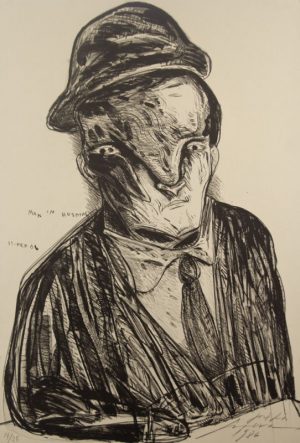José Luis Cuevas was a Mexican artist affiliated with the post-World War II movement Generación de la Ruptura, or Breakaway Generation, challenging the dominant Mexican muralism of the time. Cuveas was a controversial figure for most of his life, often considered to be vain and obsessed with his own sickness and death. He was primarily self-taught and developed a figurative style in which he used unnatural, almost grotesque proportions. In 1986, Cuevas came to Tamarind as part of the México Nueve project. He created several lithographs of portraits and self-portraits in his signature style.
Cuevas studied at the National School of Painting and Sculpture at the age of ten. Over time, he developed a unique aesthetic of paintings and sculptures depicting disfigured or dis-proportioned figures and portraits. Cuevas represented Mexico in the 1982 Venice Biennale and he created a museum to himself in an old monastery which opened in 1992. The artist and his museum, with his life and sexual prowess as its main topic, are both controversial. His works are held in the collections of the Art Institute of Chicago, The Metropolitan Museum of Art in New York, and Los Angeles County Museum of Art, among others.
More Information
New York Times

